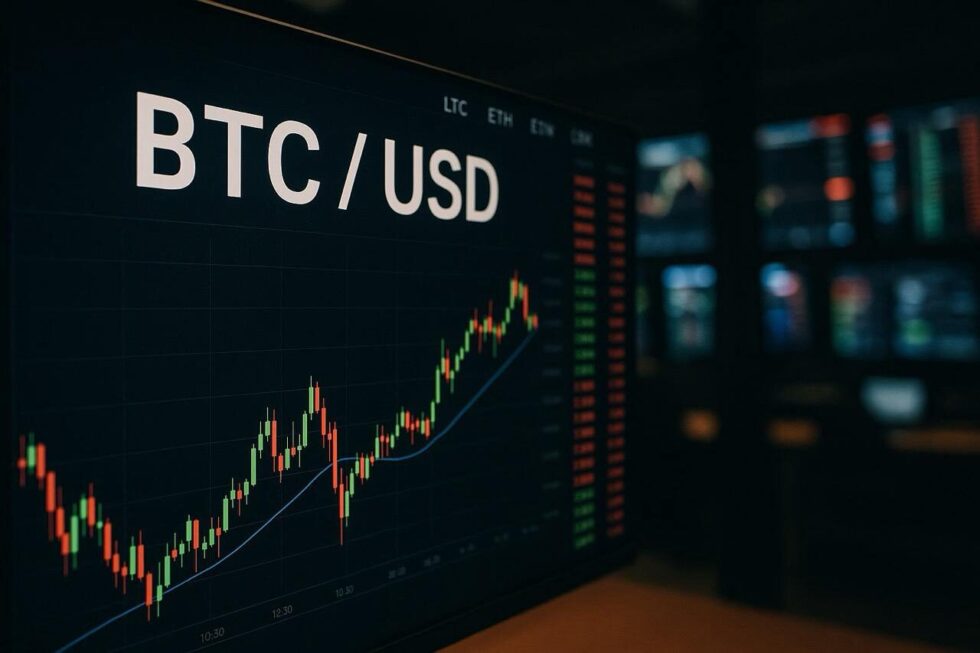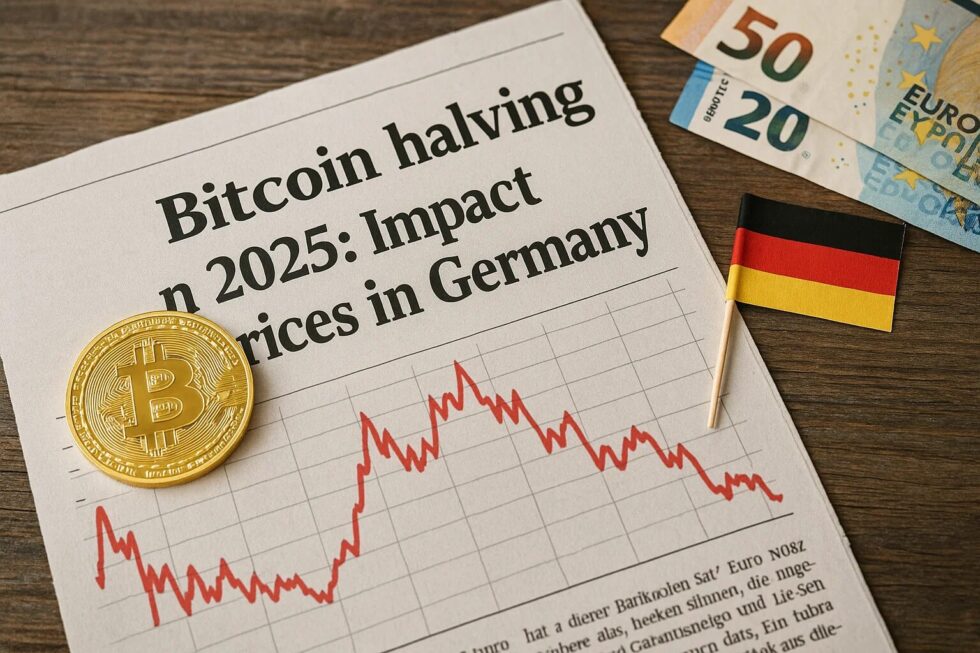What is Bitcoin halving and why it affects cryptocurrency prices in Germany in 2025

Bitcoin halving is one of the most anticipated events in the cryptocurrency market, especially in 2025, when Germany remains one of Europe’s key hubs for blockchain adoption and digital asset regulation. Scheduled approximately every four years, halving cuts the reward miners receive for validating transactions by 50%, directly impacting Bitcoin’s supply rate. In April 2024, the latest halving reduced the block reward from 6.25 BTC to 3.125 BTC, setting the stage for potential price shifts this year. Experts note that halving historically precedes periods of increased volatility and long-term price appreciation.
With Germany’s growing number of licensed crypto exchanges and increasing institutional interest, the effects of this event are already being felt in the local market. Investors, both retail and professional, are closely monitoring Bitcoin’s performance as they prepare for regulatory changes and shifting demand. This year’s dynamics could redefine Bitcoin’s role in Europe’s financial landscape — as reported by G.Business
How Bitcoin halving works and why it matters
Bitcoin halving is coded into the cryptocurrency’s protocol by its creator, Satoshi Nakamoto, to ensure controlled scarcity. Every 210,000 blocks mined — roughly every four years — the reward for adding a new block to the blockchain is reduced by 50%. This gradual reduction means that the total supply of Bitcoin will never exceed 21 million coins. The idea mirrors the scarcity principle of gold and other precious commodities, where a limited supply can increase perceived value. For miners, halving directly impacts profitability, as they receive fewer coins for the same computational effort. Historically, reduced supply growth combined with steady or rising demand has led to upward price pressure, though short-term volatility is common. In 2025, analysts expect a similar pattern, especially with institutional adoption in Germany gaining momentum.
Key facts about the April 2024 halving:
- Block reward before: 6.25 BTC
- Block reward after: 3.125 BTC
- Estimated next halving: 2028
- Total Bitcoin mined so far: ~19.6 million
- Remaining supply: ~1.4 million BTC
The impact of halving on cryptocurrency prices in Germany

Germany’s crypto market is among the most regulated in Europe, which influences how global events like halving affect local prices. Licensed platforms such as Bitpanda GmbH and BSDEX provide compliant trading environments, attracting both retail investors and institutional players. The halving’s reduction in supply coincides with increased demand from German pension funds and fintech companies exploring Bitcoin as an alternative investment. Historically, in 2012, 2016, and 2020, Bitcoin prices rose significantly within 12–18 months after each halving. However, in 2025, the market is also reacting to global interest rate policies, inflation concerns, and regulatory clarity from the BaFin (Federal Financial Supervisory Authority).
Factors influencing post-halving prices in Germany:
- Regulation: Strict compliance attracts institutional capital.
- Energy prices: Mining costs in Europe impact miner profitability.
- Euro exchange rate: Currency fluctuations affect investor behavior.
- ETF approvals: Bitcoin ETFs in Germany increase market access.
- Public perception: Media coverage fuels retail interest.
Investment strategies after the 2024 halving
Investors in Germany often approach post-halving periods with mixed strategies, balancing short-term volatility with long-term growth expectations. Those with a buy-and-hold philosophy (HODL) typically accumulate Bitcoin before or shortly after halving, expecting significant gains over the following year. Active traders, on the other hand, use derivatives, stop-loss orders, and diversified portfolios to manage risk. In 2025, the German market also offers crypto savings plans (“Sparpläne”) through regulated brokers, allowing for gradual accumulation without large upfront investments.
Popular strategies among German investors:
- Dollar-cost averaging (DCA) – Investing a fixed amount regularly.
- Portfolio diversification – Combining Bitcoin with stocks, bonds, and ETFs.
- Staking and lending – Earning interest via regulated crypto platforms.
- Technical analysis trading – Using charts to predict short-term moves.
- Tax optimization – Holding Bitcoin for over a year to benefit from Germany’s tax exemption on crypto gains.
Table: Bitcoin price performance after previous halvings
| Halving Year | Price at Halving | Price 12 Months Later | % Increase |
|---|---|---|---|
| 2012 | $12 | $1,000 | +8,233% |
| 2016 | $650 | $2,500 | +284% |
| 2020 | $8,700 | $55,000 | +532% |
| 2024 | $63,000 | TBD (2025) | TBD |
This historical data shows a consistent trend of long-term appreciation after halving, though past performance is not a guarantee of future results.
Risks and challenges for investors in Germany in 2025
While halving has historically been associated with price increases, it is not without risks. The immediate aftermath often brings high volatility, and traders unprepared for sudden swings can face significant losses. German investors must also navigate BaFin’s compliance requirements, which include identity verification and taxation rules. Moreover, rising electricity costs in Europe could affect mining activity, potentially influencing Bitcoin’s transaction processing speed and market sentiment. Finally, global economic uncertainties — such as U.S. monetary policy or geopolitical tensions — can disrupt expected post-halving trends.
Tips for risk management:
- Set clear entry and exit points for trades.
- Avoid over-leveraging positions.
- Keep part of your portfolio in stable assets.
- Stay updated on BaFin regulations.
- Monitor global macroeconomic indicators.
Basic principle:
In Germany, profits from the sale of Bitcoin are tax-free if at least 12 months pass between purchase and sale. If sold within one year, the profits are subject to income tax and must be declared in your tax return. The tax treatment is based on § 23 EStG (private sales transactions).
Key points:
- There is no flat capital gains tax as with shares; instead, taxation is based on your personal income tax rate.
- Tax-free allowance: Up to €600 profit per year (total for all private sales transactions) is exempt from tax.
- Losses can be offset against profits from other private sales transactions.
Practical examples:
- Long-term holder (tax-free)
- Purchase: 0.5 BTC on January 1, 2024 for €15,000
- Sale: February 1, 2025 for €25,000
- Profit: €10,000
- Tax: €0, as the holding period is longer than 12 months.
- Short-term trade (taxable)
- Purchase: 0.2 BTC on June 1, 2025 for €10,000
- Sale: September 15, 2025 for €12,500
- Profit: €2,500
- Tax: At a personal tax rate of 30% = €750 payable to the tax office.
- Profit below the tax-free allowance (tax-free)
- Purchase: 0.1 BTC on January 5, 2025 for €3,000
- Sale: May 20, 2025 for €3,500
- Profit: €500
- Tax: €0, as the profit is below €600.
Tax hacks from professionals:
- Use coin-tracking software to automatically document purchase and sale prices (e.g., CoinTracking, Blockpit).
- Partial sale strategy: When realizing profits, sell only part of your coins to stay below the €600 allowance.
- Manage holding periods strategically: Sell coins only after the 12-month period if they are close to expiry.
- Use separate wallets for long-term and short-term holdings to keep tax oversight clear.
- Consult a tax advisor with crypto experience — often saves more than it costs.
For German investors, the 2024 Bitcoin halving and the country’s favorable long-term tax treatment on crypto gains together create a unique environment for strategic wealth building in 2025. While halving may set the stage for potential price appreciation, it also brings short-term volatility and heightened regulatory attention. Understanding Germany’s tax rules — especially the 12-month holding period and €600 exemption — can help investors maximize returns while staying compliant. By combining disciplined investment strategies with precise tax planning and professional advice, market participants can position themselves to benefit from both the cyclical dynamics of Bitcoin and the stability of Germany’s regulated crypto landscape. In an era where digital assets are reshaping Europe’s financial architecture, informed decision-making will remain the most valuable asset of all.
Latest events in politics and global economy at Cryptonews – practical tips on how to act and invest. Read: Apple Confirms GPT-5 Integration in iOS 26 Launching This September